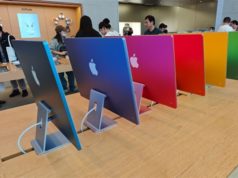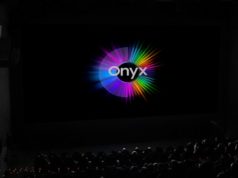
- Register
- Login
28°C
- Article
- . (0)
- Related content
While many industry observers believe it will take at least three more years before micro LED can be commercialized, PlayNitride is undertaking trial production of micro LED panels for niche market applications for a few types of devices, expecting the technology to take off soon, according to company chairman and CEO Charles Li.
According to Li, LED lighting is increasingly replacing incandescent light bulbs because the former’s luminous efficiency of over 100lm/W is much higher than the latter’s 15-20lm/W. However, LCD panels’ luminous efficiency is even lower than that of incandescent light bulbs, with their backlighting consuming much power, for example, about 200W for a 1,080p LCD TV.
As the displays of consumer electronics get bigger, power consumption is a problem. OLED panels consume less power, but the manufacturing process using organic materials is prone to be dampened by factors such as vapor and thus it is uneasy to hike yield rates. Energy savings of such panels are also 30% short of original expectations.
Samsung in early 2006 expected OLED to eventually surpass LCD to become the mainstream display technology because the former features low power consumption, simple structure, wide color gamut, large viewing angles under sunlight, quick response time, slimness and thinness. In terms of these aspects, micro LED also stands a chance of defeating LCD.
The concept of micro LED is that every pixel is an independent light-emitting source. Outdoor large-size LED displays consist of arrays of regular LED devices, but LED-based displays for TVs, smartphones or smartwatches require a manufacturing process where micro LEDs sized about 1/10,000 of regular ones are mass-transferred using semiconductor process.
Micro LED panels will have the following advantages: (1) High resolution of 2,000-6,000ppi, much higher than 400ppi for Retina LCD panels; (2) low power consumption, about 10% of that for LCD; (3) higher luminance than about 650nit for iPhone; (4) flexible substrates can be used and cut into different shapes on demand; (5) 20% more than OLED in color gamut performance.
It remains to be seen whether production of Micro LED panels is feasible and what cost it entails. There may not be answers to the questions for the time being but in view of micro LED’s simple structure and the development of display technology, it is possible to produce micro LED panels at reasonable cost.
Mainstream LED chip sizes range from 300 micrometers to 500 micrometers, while mini LED of about 100 micrometers are mainly used to produce ultra-fine pixel pitch displays for high gross margins. micro LED chips are generally 10-20 micrometers in size, with 2.5 micrometers being the smallest so far.
For the time being, micro LED applications for smartphones or TVs are infeasible in terms of production cost and therefore displays not suitable for using LCD or LED could be the niche segments for micro LED panels. Smart wearable devices could be such niche-market application, for under sunlight OLED display capability weakens and LCD consumes much power to reach high brightness. Automotive displays on windshields are another niche-market application, for transparency of 80% for micro LED panels is higher than that of 40% for OLED. VR (virtual reality)/AR (augmented reality) devices and indoor large-size displays could also be niche-market applications.
Micro LED is actually not new technology but based on LED, LCD and OLED technologies. Therefore, development of micro LED technology entails integration of LED, LCD and OLED supply chains. Development of micro LED faces challenges of how to decrease production cost rather than break through technological bottlenecks.
Mass transfer, accurate array and fixing of micro LED chips are key to micro LED production.Currently, 10G LCD panel manufacturing process can finish the arraying in several seconds.
For mass transfer, PlayNitride has hiked yield rates from 30% initially to over 99% at present, but such yield rates are still short of an ideal level of 99.9999%. Currently, PlayNitride is capable of mass-transferring very small micro LED chips, fixing RGB (red, green, blue) sets and developing micro LED panels. However, PlayNitride finds it difficult to convince vendors to adopt micro LED panels.
There are problems to solve before commercialization of micro LED technology is possible, such as uniformity of LED epitaxial wafers and mass inspection of micro LED chips for which qualified machines are not yet available.
(This article is a summary of the opinions of Charles Li, chairman and CEO of PlayNitride.)

PlayNitride chairman and CEO Charles Li.
Photo: Siu Han, Digitimes, September 2017
-
Sigurd to enter board of Winstek
Before Going to Press | 6h 1min ago
-
MEMS sensor demand for smartphones, automotive surging
Before Going to Press | 6h 2min ago
-
Samsung certifies Synopsys design platform for 28nm FD-SOI process
Before Going to Press | 6h 2min ago
-
Brand device vendors competing in wrist-worn wearables market with new products
Before Going to Press | 6h 35min ago
-
Taiwan market: Smartphone sales return to growth in September
Before Going to Press | 6h 41min ago
-
SMIC plans capacity expansions in China
Before Going to Press | 7h 18min ago
-
Taiwan panel makers optimistic about large-size micro LED displays
Before Going to Press | 7h 21min ago
-
Samsung ready to mass produce MRAM chips using 28nm FD-SOI process
Before Going to Press | 7h 23min ago



- China AMOLED panel capacity expansion forecast, 2016-2020
This Digitimes Research Special Report examines the China…









